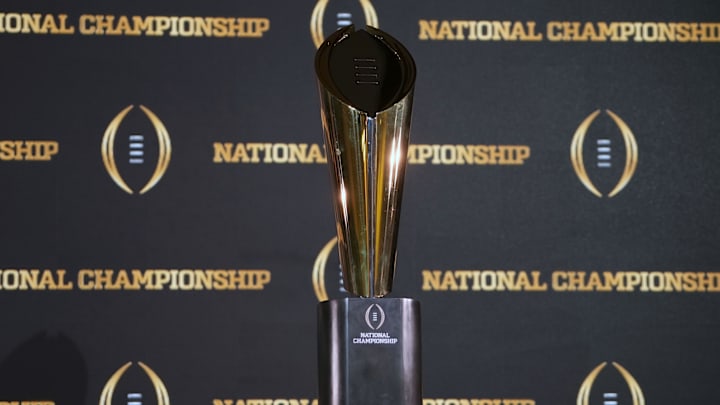The world of NCAA athletics has changed dramatically over the past several years. NIL, the growing ease of use of the transfer portal, and seemingly never-ending changes to conference alignment and postseason tournaments has made things hard to follow for fans. This has been seen most in college football.
The changes keep coming, too, as Thursday saw the long-expected announcement that revenue sharing was coming for college sports.
According to reports from all over the sports media world, all five power conferences (yes, the Pac-12 still counts...for now) have agreed, in conjunction with the NCAA, on a revenue-sharing settlement that will affect payouts to past, present, and future collegiate athletes for the money that has been made, is being made, and will be made by utilizing the athletes’ names, images, and likenesses.
Plenty of details still have to be worked out before anything is finalized, but according to On3's Pete Nakos, NCAA member institutions will be able opt into a proposed plan to share $20 Million of revenue annually with the athletes at the school. How much will go to which players has not yet been determined, but Title IX is still a factor that must be considered.
So, what else does this mean for the sport of college football?
NIL Isn't Going Anywhere
With the proposed $20 Million cap in place for NCAA athletic departments, revenue sharing will not be the only means of income for big-time college football players and, to a lesser extent, the top athletes in other sports.
Thanks to a court ruling in February, schools will be able to take part in NIL negotiations directly. This will mean that NIL collectives and, potentially, athletic department budgets will be part of football programs' recruiting pitches.
Even with the revenue sharing that is coming, NIL will be a major factor in recruiting the high school and transfer portal ranks and in talent retention (essentially, in avoiding major transfer portal defection numbers). Major college football programs seem to operate with NIL budgets between $10 Million and $20 Million, and major basketball programs seem to have budgets between $1 Million and $5 Million. Even with the additional sports' athletes receiving much less NIL money (outside of some exceptions), the top schools' athletes will operate beyond the $20 Million revenue-sharing cap.
That extra money will come from NIL collectives. Hopefully, for the sake of college football fans, the revenue sharing will reduce the financial burden placed on the consumer, but how everything will play out still remains to be seen.
The NCAA Loses More and More Power Each Day, but It Isn't Dead
Seemingly at every turn, the NCAA loses more and more of its power and authority to make and enforce rules across college athletics, especially as it pertains to players' rights to freedom in their pursuit of financial gain and eligibility.
But the NCAA isn't going away just yet.
The plan for revenue sharing gives the NCAA an extension of life, though, it won't be an easy one. As part of the settlement with past players, The NCAA must pay out $2.8 Billion. As an organization, the NCAA is responsible for 60% of this number, while member institutions will pay out 40% of it indirectly through smaller annual revenue distribution checks.
Contracts Likely Will Come
While there are already some NIL-related "contracts" that exist on a small scale, with the revenue-sharing settlement, written agreements will be a real part of the future of college football's payment of players.
Contracts (theoretically) will eliminate the uncertainty and dishonesty that is rampant in the current world of NIL payments across college football.
The current lawsuit between quarterback Jaden Rashada and the Florida Gators is all about an alleged promise of payment that never materialized for Rashada, causing his decommitment from Florida. That type of impropriety will not be gone completely from college sports, but it will make the legality behind dealing with it much more black-and-white.
There Are Still Major Questions
With every answer handed down from the courts or from congressional hearings, more questions pop up for the NCAA.
With a virtual athletic department-wide salary cap coming into play, will certain sports or even positions on teams be guaranteed specific numbers?
Is NIL still a Wild, Wild West?
What about the transfer portal? Can players still leave at almost any time, or will contracts be put in place that require service time?
Will the new system become an all-out pay for play system?
Do different conferences get to make their own rules? What about the Group of 5 vs. Power 5 (soon to be Power 4)? FCS?
How does all of this change with the looming possibility of major college football programs and/or entire athletic departments breaking away from the NCAA?
Frankly, this list of questions could go on and on as uncertainty has never been greater across college sports. Following along will be a difficult ride, but as things stand today, college football is 99 days away, and there is nothing that the government, the court system, or the NCAA has done that can jeopardize that.
